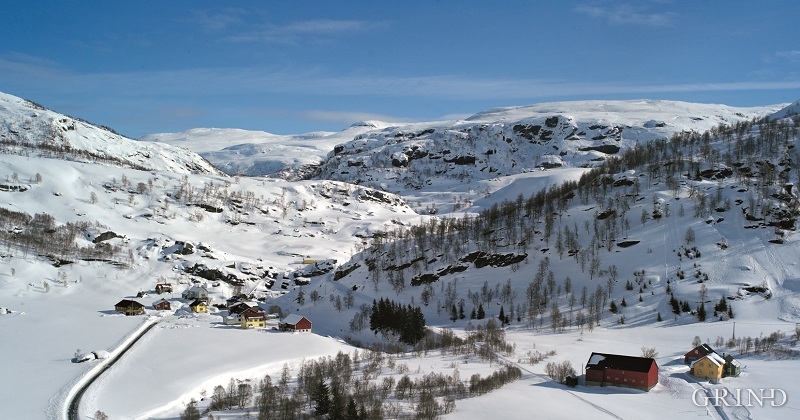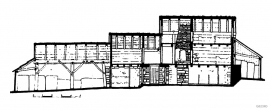Published: 21.02.2013 | Author: Nils Georg Brekke
At the end of the 1700s there were several more freeholders at Gullbrå, and in the early 1800s all the users owned their own farms. By then the farm partitioning had developed step by step into a clustered community, and this existed right until the land reforms in 1957. In 1959 the Gullbrå farmstead was registered and measured, and thus we have solid documentation about this unusually interesting farmstead. Today most of the buildings that were still standing in 1957 are gone or reconstructed, but there are still buildings from the old farmstead.
The houses on farm No. 3 are joined together by a house on top of a high cellar, “Steinstovo” (the stone house), and a traditional frame-built hayshed. The need to be able to walk inside the houses between the living quarters, the hayshed and the cowshed, is easy to understand when we keep in mind the severe snow winters in this mountain valley. High stonewalls and enormous stone slabs, vertically placed, which protected the houses inside, have been necessary when the snow was lying metres thick in the farmstead. The custom of taking the cattle into the cellar below the dwelling quarters, in order to benefit from the heat from the domestic animals, we also know from other snow-rich regions.




